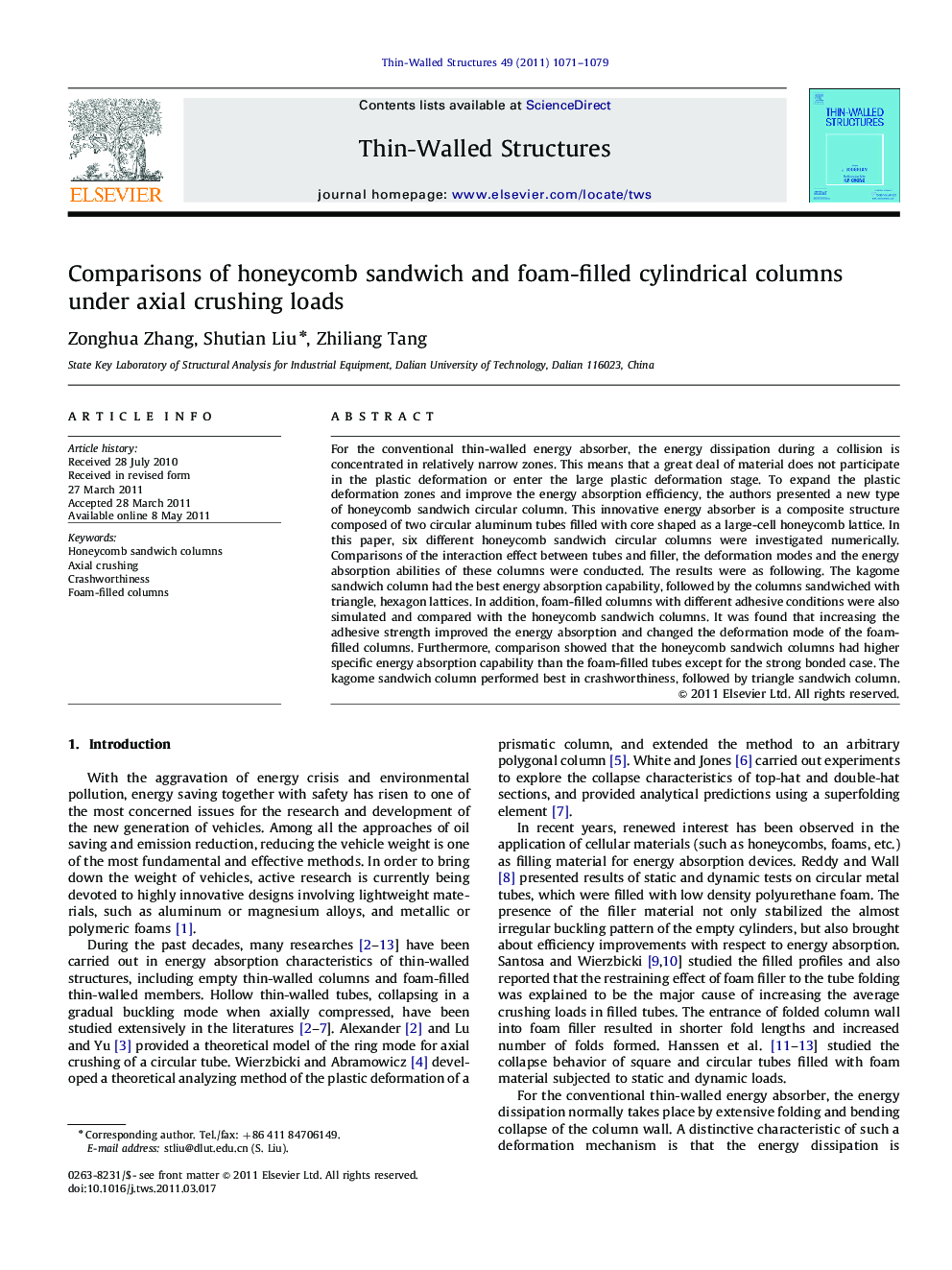| Article ID | Journal | Published Year | Pages | File Type |
|---|---|---|---|---|
| 309526 | Thin-Walled Structures | 2011 | 9 Pages |
For the conventional thin-walled energy absorber, the energy dissipation during a collision is concentrated in relatively narrow zones. This means that a great deal of material does not participate in the plastic deformation or enter the large plastic deformation stage. To expand the plastic deformation zones and improve the energy absorption efficiency, the authors presented a new type of honeycomb sandwich circular column. This innovative energy absorber is a composite structure composed of two circular aluminum tubes filled with core shaped as a large-cell honeycomb lattice. In this paper, six different honeycomb sandwich circular columns were investigated numerically. Comparisons of the interaction effect between tubes and filler, the deformation modes and the energy absorption abilities of these columns were conducted. The results were as following. The kagome sandwich column had the best energy absorption capability, followed by the columns sandwiched with triangle, hexagon lattices. In addition, foam-filled columns with different adhesive conditions were also simulated and compared with the honeycomb sandwich columns. It was found that increasing the adhesive strength improved the energy absorption and changed the deformation mode of the foam-filled columns. Furthermore, comparison showed that the honeycomb sandwich columns had higher specific energy absorption capability than the foam-filled tubes except for the strong bonded case. The kagome sandwich column performed best in crashworthiness, followed by triangle sandwich column.
